Halid Ziya Yerebakan
Consistent Point Matching
Jul 31, 2025Abstract:This study demonstrates that incorporating a consistency heuristic into the point-matching algorithm \cite{yerebakan2023hierarchical} improves robustness in matching anatomical locations across pairs of medical images. We validated our approach on diverse longitudinal internal and public datasets spanning CT and MRI modalities. Notably, it surpasses state-of-the-art results on the Deep Lesion Tracking dataset. Additionally, we show that the method effectively addresses landmark localization. The algorithm operates efficiently on standard CPU hardware and allows configurable trade-offs between speed and robustness. The method enables high-precision navigation between medical images without requiring a machine learning model or training data.
BodyGPS: Anatomical Positioning System
May 12, 2025Abstract:We introduce a new type of foundational model for parsing human anatomy in medical images that works for different modalities. It supports supervised or unsupervised training and can perform matching, registration, classification, or segmentation with or without user interaction. We achieve this by training a neural network estimator that maps query locations to atlas coordinates via regression. Efficiency is improved by sparsely sampling the input, enabling response times of less than 1 ms without additional accelerator hardware. We demonstrate the utility of the algorithm in both CT and MRI modalities.
Automatic Mapping of Anatomical Landmarks from Free-Text Using Large Language Models: Insights from Llama-2
Oct 17, 2024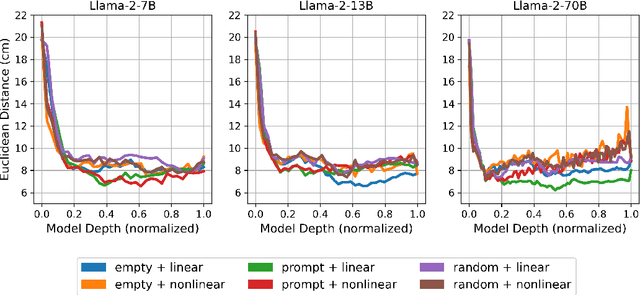

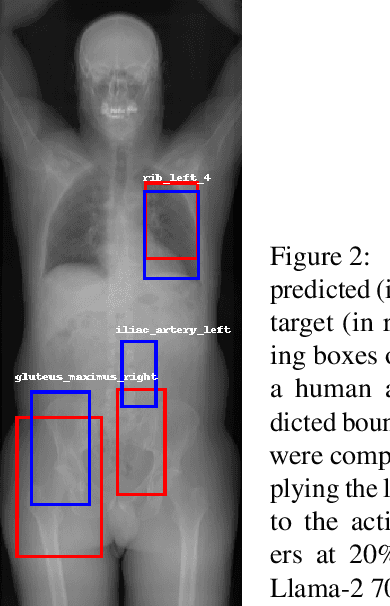
Abstract:Anatomical landmarks are vital in medical imaging for navigation and anomaly detection. Modern large language models (LLMs), like Llama-2, offer promise for automating the mapping of these landmarks in free-text radiology reports to corresponding positions in image data. Recent studies propose LLMs may develop coherent representations of generative processes. Motivated by these insights, we investigated whether LLMs accurately represent the spatial positions of anatomical landmarks. Through experiments with Llama-2 models, we found that they can linearly represent anatomical landmarks in space with considerable robustness to different prompts. These results underscore the potential of LLMs to enhance the efficiency and accuracy of medical imaging workflows.
Real Time Multi Organ Classification on Computed Tomography Images
Apr 29, 2024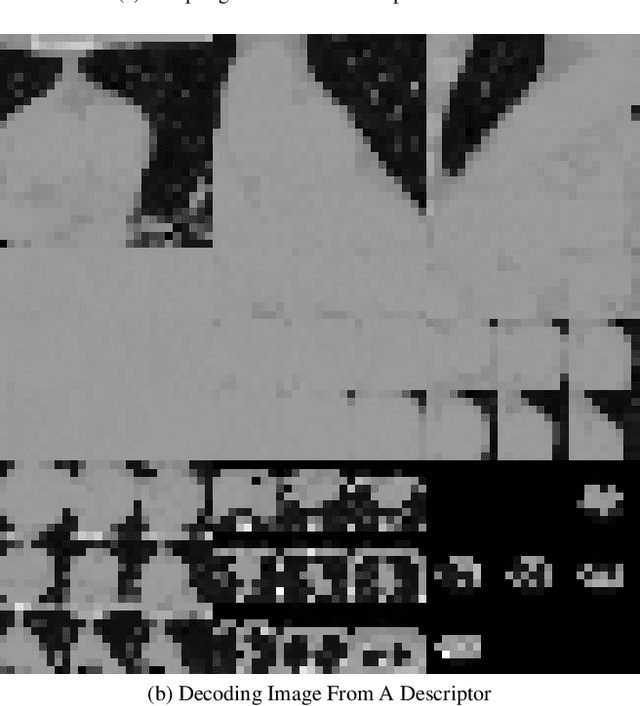

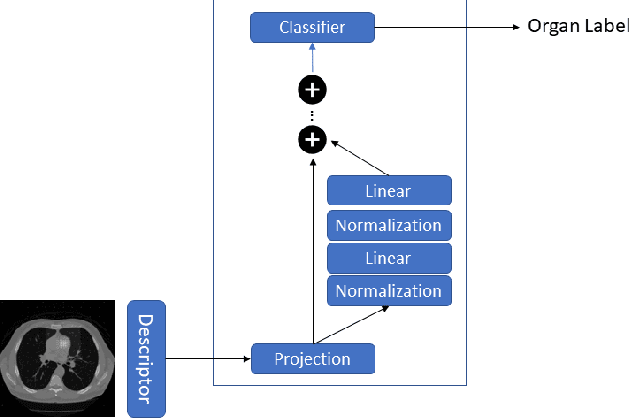

Abstract:Organ segmentation is a fundamental task in medical imaging, and it is useful for many clinical automation pipelines. Typically, the process involves segmenting the entire volume, which can be unnecessary when the points of interest are limited. In those cases, a classifier could be used instead of segmentation. However, there is an inherent trade-off between the context size and the speed of classifiers. To address this issue, we propose a new method that employs a data selection strategy with sparse sampling across a wide field of view without image resampling. This sparse sampling strategy makes it possible to classify voxels into multiple organs in real time without using accelerators. Although our method is an independent classifier, it can generate full segmentation by querying grid locations at any resolution. We have compared our method with existing segmentation techniques, demonstrating its potential for superior runtime in practical applications in medical imaging.
A Hierarchical Descriptor Framework for On-the-Fly Anatomical Location Matching between Longitudinal Studies
Aug 11, 2023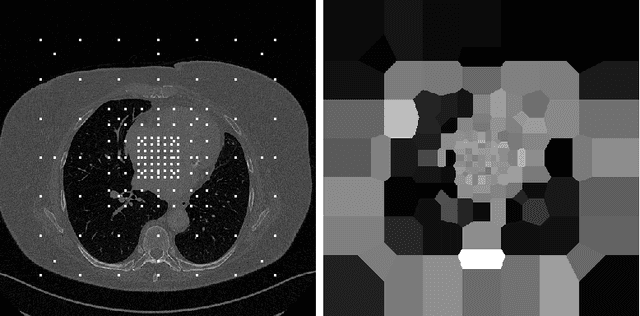

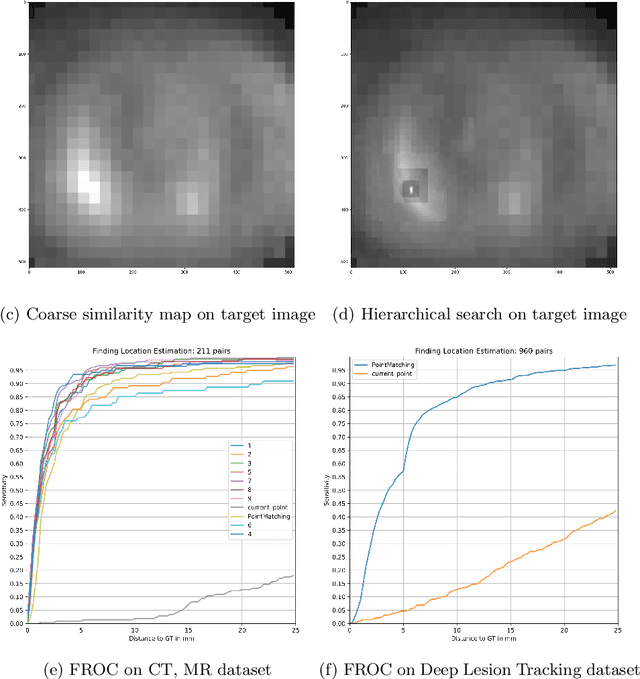

Abstract:We propose a method to match anatomical locations between pairs of medical images in longitudinal comparisons. The matching is made possible by computing a descriptor of the query point in a source image based on a hierarchical sparse sampling of image intensities that encode the location information. Then, a hierarchical search operation finds the corresponding point with the most similar descriptor in the target image. This simple yet powerful strategy reduces the computational time of mapping points to a millisecond scale on a single CPU. Thus, radiologists can compare similar anatomical locations in near real-time without requiring extra architectural costs for precomputing or storing deformation fields from registrations. Our algorithm does not require prior training, resampling, segmentation, or affine transformation steps. We have tested our algorithm on the recently published Deep Lesion Tracking dataset annotations. We observed more accurate matching compared to Deep Lesion Tracker while being 24 times faster than the most precise algorithm reported therein. We also investigated the matching accuracy on CT and MR modalities and compared the proposed algorithm's accuracy against ground truth consolidated from multiple radiologists.
Supervised Understanding of Word Embeddings
Jun 23, 2020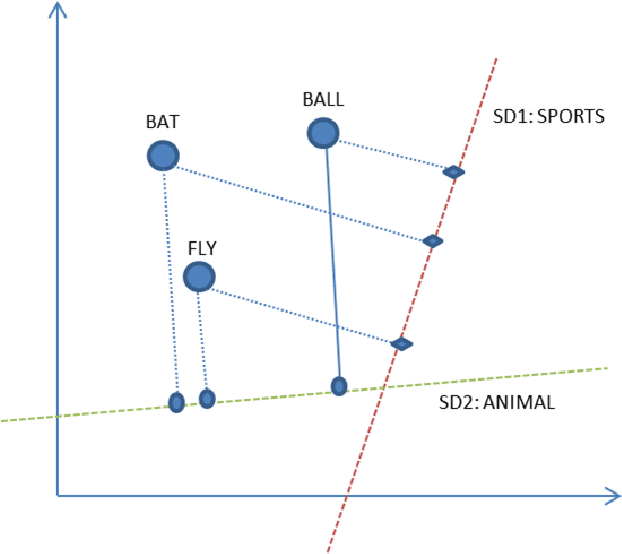

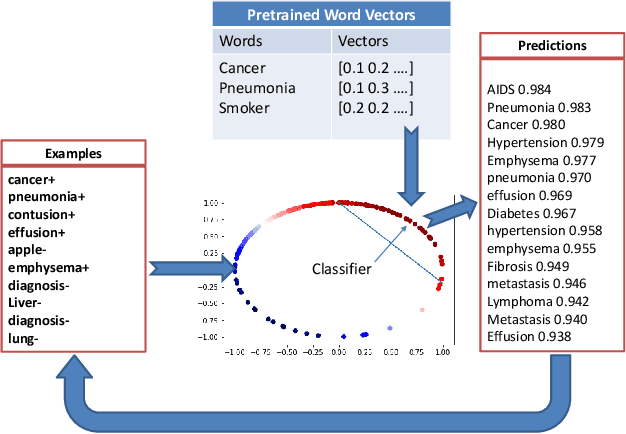

Abstract:Pre-trained word embeddings are widely used for transfer learning in natural language processing. The embeddings are continuous and distributed representations of the words that preserve their similarities in compact Euclidean spaces. However, the dimensions of these spaces do not provide any clear interpretation. In this study, we have obtained supervised projections in the form of the linear keyword-level classifiers on word embeddings. We have shown that the method creates interpretable projections of original embedding dimensions. Activations of the trained classifier nodes correspond to a subset of the words in the vocabulary. Thus, they behave similarly to the dictionary features while having the merit of continuous value output. Additionally, such dictionaries can be grown iteratively with multiple rounds by adding expert labels on top-scoring words to an initial collection of the keywords. Also, the same classifiers can be applied to aligned word embeddings in other languages to obtain corresponding dictionaries. In our experiments, we have shown that initializing higher-order networks with these classifier weights gives more accurate models for downstream NLP tasks. We further demonstrate the usefulness of supervised dimensions in revealing the polysemous nature of a keyword of interest by projecting it's embedding using learned classifiers in different sub-spaces.
Hierarchical Latent Word Clustering
Jan 20, 2016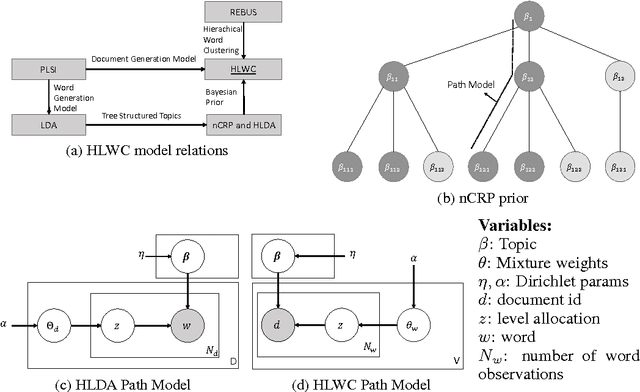
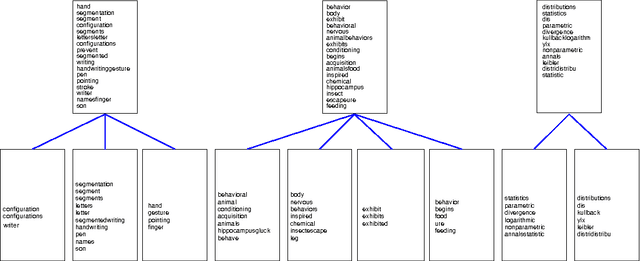
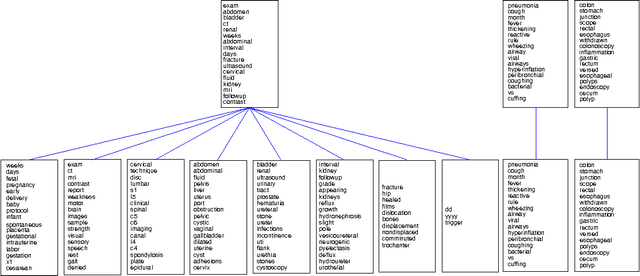
Abstract:This paper presents a new Bayesian non-parametric model by extending the usage of Hierarchical Dirichlet Allocation to extract tree structured word clusters from text data. The inference algorithm of the model collects words in a cluster if they share similar distribution over documents. In our experiments, we observed meaningful hierarchical structures on NIPS corpus and radiology reports collected from public repositories.
 Add to Chrome
Add to Chrome Add to Firefox
Add to Firefox Add to Edge
Add to Edge